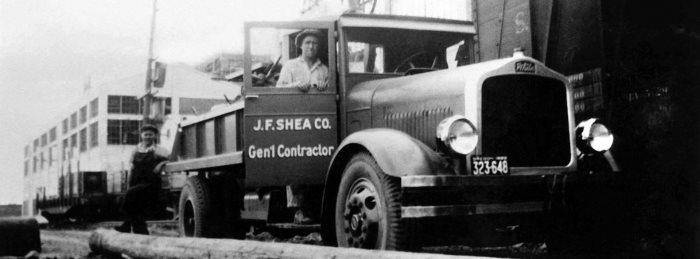FAMILY OWNED SINCE 1881

Established in 1881, Shea continues to thrive today.
In 1881, company founder John F. Shea established a small plumbing business in Portland, Oregon. From the modest beginnings, his sons and their sons, have built J.F. Shea Co. into the largest privately held construction firm in the nation.
Shea has been involved in three of the 20th century's top 10 construction achievements - the Hoover Dam, the Golden Gate Bridge, and the interstate highway system - but those accomplishments are only a small part of the company's heritage.
The company legacy of unbroken family management continues today and prides itself on its history, its family and its people and is bolstered by the company's core values of honesty, integrity, respect for the individual, teamwork and competitive spirit.









